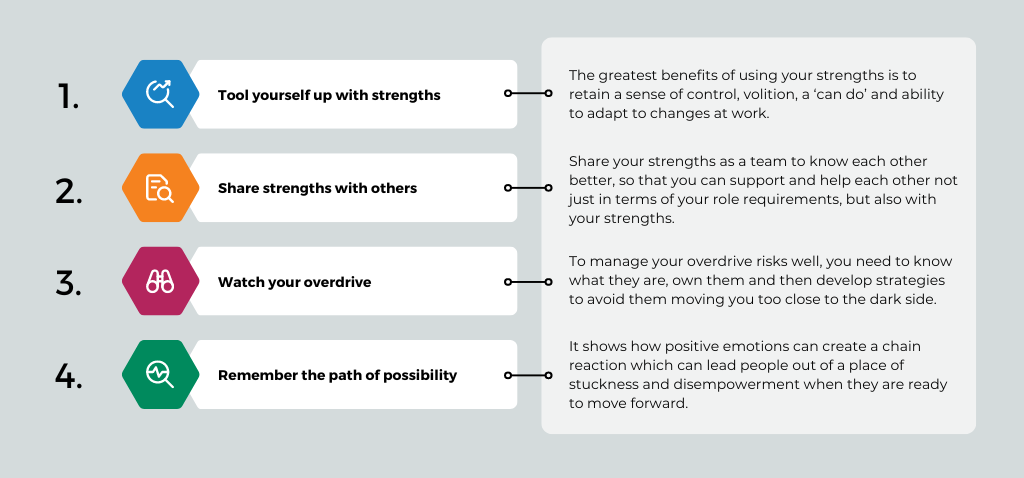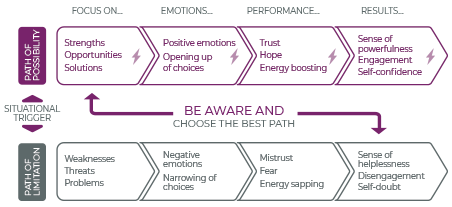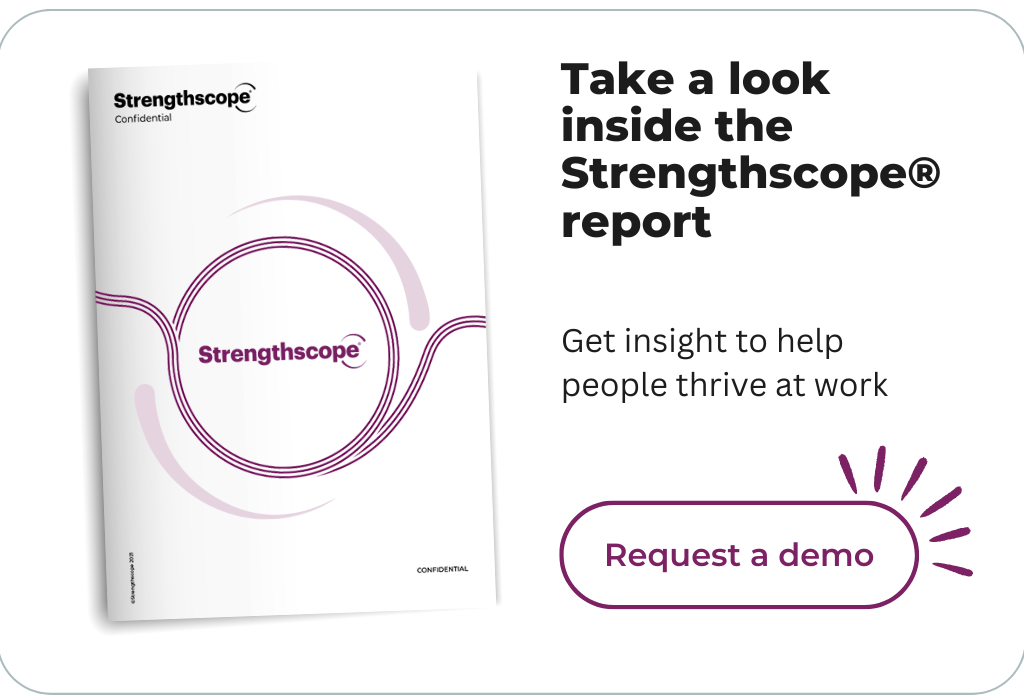Podcast transcript:
Change is everywhere – so what can you do about it?
There is so much change going on right now in the world of work as organisations take tough strategic decisions as they face into market uncertainty and turbulence, while still recovering from a global pandemic which has left a lasting economic and emotional legacy across the world.
Sometimes, the changes employees are being asked to make are relatively small – maybe rapid changes in team membership, new tech systems being implemented and so on. At other times, changes are much bigger, as organisations make redundancies, close down business areas to rationalise, or merge with other businesses to save costs and stay competitive.
The brain is good at adapting but also anxious about change
On this, two things about the human brain: 1. We’re actually really good at adapting to new situations – learning new skills and creating new structures in the brain to accommodate this. And 2. Most people experience change as pain. Yes, change as pain. Change is registered, according to FMRI scanning (the closest thing we can get to understanding where in the brain different functions are located), in the same part of the brain that registers physical pain.
And we know that in the face of danger, the brain focuses on survival, so creating a response of fight, flight, freeze or faun. Unless we are able to prime the brain to see change as an opportunity for learning and growth. And one of the best ways to do that is to give our brains the message that we CAN manage change effectively, that we ARE in control and that events around us don’t need to feel like threats.
My top tips for managing change through strengths
Today’s podcast gives you some guidelines on how to use your strengths, and the strengths of others, when facing changes large and small. And while my podcasts focus on work, actually, these principles can be applied equally well to your home life too. Using your strengths during change puts your brain on a more positive footing, enabling it to help you make the changes with the minimum of pain and the maximum of energy.
My four principles for managing change and transformation through your strengths are:
- Tool yourself up with strengths
- Share strengths with others
- Watch your overdrive
- Remember the path of possibility.

-
Tool yourself up with strengths
One of the greatest benefits of using your strengths is to give you a sense of control, volition and ‘can do’. In the case of changes at work, this can be super helpful. Say you’ve just been told that your team is merging with another one and that part of your job will change significantly as a result. OK, all your survival instincts are kicking in right now – leading to a fight-flight stress response. Totally natural, totally normal, and something it’s probably going to take a little while to get used to.
When you’re ready to get on the empowered foot, check back on your strengths and decide which will be most useful for you to use when navigating the changes that are coming, and then make a plan on how to use them. This process is genuinely empowering because it puts you in a position of control. And that’s why strengths are so beneficial during change.
So for me, in that situation, I decide to bring in my Collaboration strength to understand what the two teams have in common, to help create a shared vision and goal and to build a relationship with the key people from the merging team. This means that the whole process doesn’t feel like it’s being done to me, more that I have a choice about what I can bring to make a positive difference to the changes.
-
Share strengths with others
Step 2 is to share your strengths as a team so that you know each other better and so that you can support and help each other not just in terms of your role requirements, but also in terms of what makes you you – your strengths.
So in this case, I might offer up my Optimism strength for when members of the team are feeling low on motivation or can’t see a solution or way through. In these situations, I’m happy to play the role of cheerleader or coach, providing a sense of perspective and helping my colleagues to deal with the change in a way that works for them, because I believe that they can.
Which strengths do you have that can help your colleagues during change? And which strengths do you need to draw on from others? I know that I value hugely my colleagues’ Efficiency and Results focus when we’re facing into change because I can rely on them for a plan that will get us across the line and I can be sure that we’ll know when we’ve got there.
So step 2 is to get real about the strengths you have that can help others and on the strengths you need that will help you.
-
Watch your overdrive
Times of change are great opportunities for a stress response to be triggered. Some people are really good at navigating change and actually get a buzz from changing environments and the challenges they face along the way. For most of us though, change is seen as threat. So it’s really important to get a read on how your strengths in overdrive risks show up during change.
It could be that your greatest strengths just overtop – like my Collaboration might start to look more like panicky over-consultation seeing me try to keep everything harmonious and light when actually the team needs to go through a phase of storming and discomfort. So my Collaboration may not have much value at that point – it may be better for me to bring in a more appropriate strength like Critical thinking to help us find where things aren’t working and come up with a functional solution.
To manage your overdrive risks well, you need to know what they are, own them and then develop strategies to avoid them moving you too close to the dark side. My podcast at Season 14 – episode 1Top 4 strategies for avoiding the strengths in overdrive trap, should help with this. So go check it out.
-
Remember the path of possibility
My final step is to remember the path of possibility. This is one of our central models at Strengthscope and people love it. It shows how positive emotions can create a chain reaction which can lead people out of a place of stuckness and disempowerment when they are ready to move forward. In the blog version of today’s show, I’ve included the path of possibility diagram which shows what I’m talking about, so scoot over to www.strengthscope.com and check out the blog section for more.

The path of possibility © Strengthscope 2006-2022
I want to be clear here that I’m not advocating toxic positivity, which TED talker and emotions expert Susan David is very vocal about on social. All emotions are welcome, including those which make us feel stuck and disempowered. It’s all data, right? And that data can help us make decisions.
For most of us, though, during change, particularly when we’re experiencing the toughest aspects of leaving behind and grieving for the old, and before we get to grips with the new, we will reach a point when we’ll want to move out of a place of stuckness and towards a feeling of greater empowerment and confidence. Again, choosing to use your strengths can really help with this.
Say the change I’m experiencing is seeing some of my favourite elements of my role being taken on by others and that’s leaving me feeling low and at times, helpless. Ok, those emotions are understandable and important to acknowledge. Aaaand when I want to move out of that place of stuckness, I might choose to bring in my Self-improvement and Resilience strengths to face into the challenges of my new role with energy, and start focusing on the new skills I’ll need and how I’m going to develop those.
In conclusion – when facing into change, bring your strengths with you
Change is a constant these days. And so my advice is to habituate your use of strengths during periods of change – know which strengths you can draw on, who else you can call on, and which of your strengths is prone to overdrive when you’re experiencing the pressures and stresses of change. Till next time, stay strong.













